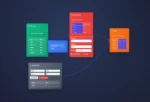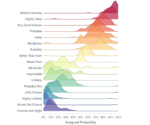Demand forecasting is a critical process that enables businesses to optimize their operations, manage inventory effectively, and meet customer demands. To enhance the accuracy of demand forecasts, it is essential to consider external factors that can significantly impact consumer behavior and purchasing patterns. Predictive models, powered by advanced analytics, allow businesses to incorporate external variables such as weather conditions, holidays, and promotional activities into their forecasting models. This article explores the significance of considering external factors in demand forecasting and how predictive models help businesses make more accurate predictions.
The Role of External Factors in Demand Forecasting:
- Weather Conditions: Weather plays a significant role in consumer behavior and product demand. Certain products, such as seasonal clothing, outdoor equipment, or ice cream, have demand patterns directly influenced by weather conditions. By integrating historical weather data into predictive models, businesses can account for the impact of weather on consumer preferences and adjust their forecasts accordingly. For example, a retailer can anticipate increased demand for winter coats during colder months and adjust their inventory levels and marketing efforts accordingly.
- Holidays and Special Events: Holidays and special events can significantly influence consumer spending patterns and demand for specific products. By considering holidays like Christmas, Thanksgiving, or Black Friday, businesses can adjust their forecasts to anticipate higher demand and plan their production, marketing campaigns, and inventory accordingly. Similarly, events such as sporting championships or festivals can drive increased demand for related products or services. By incorporating these external factors into predictive models, businesses can accurately estimate the surge in demand during such periods.
- Promotional Activities: Promotions, discounts, and marketing campaigns have a direct impact on customer purchasing behavior. By considering the timing and impact of promotional activities, businesses can adjust their demand forecasts accordingly. For example, a retailer offering a limited-time discount can expect a temporary increase in demand during the promotional period. Predictive models can incorporate historical data on promotional activities, marketing spend, and their impact on sales to make more accurate predictions about the effects of future promotions.
Leveraging Predictive Models for External Factor Consideration:
- Data Integration and Analysis: Predictive models leverage historical data on external factors such as weather conditions, holidays, and promotional activities. By integrating this data with sales records, businesses can identify correlations and patterns to understand how these factors impact demand. Advanced analytics techniques, such as regression analysis or time series analysis, can help quantify the relationships between external factors and sales performance, enabling businesses to build more accurate predictive models.
- Forecast Adjustment: Predictive models provide a framework for adjusting demand forecasts based on external factors. By incorporating the historical impact of weather conditions, holidays, and promotions, businesses can generate adjusted forecasts that account for these influences. This enables organizations to allocate resources effectively, optimize inventory levels, and plan production capacities to meet anticipated demand during specific periods.
- Real-time Data Monitoring: To ensure the accuracy of demand forecasts, businesses should continuously monitor real-time data on external factors. This includes monitoring weather forecasts, tracking holiday calendars, and staying updated on industry-specific events. By incorporating real-time data into predictive models, organizations can make dynamic adjustments to their demand forecasts, ensuring that they are responsive to changing external conditions.
Case Study: Starbucks’ Demand Forecasting Success:
Starbucks, the global coffee chain, exemplifies the significance of considering external factors in demand forecasting. The company incorporates weather data into its predictive models to account for the impact of weather conditions on customer demand for hot or cold beverages. By analyzing historical sales data alongside weather patterns, Starbucks optimizes inventory levels, adjusts staffing requirements, and tailors its marketing campaigns to align with anticipated customer preferences based on weather forecasts. This proactive approach allows Starbucks to meet customer demands effectively, reduce waste, and drive customer satisfaction.
Considering external factors such as weather conditions, holidays, and promotional activities in demand forecasting is crucial for businesses seeking to make accurate predictions and optimize their operations. By incorporating these variables into predictive models, organizations can adjust their forecasts and align their resources accordingly. This enables businesses to optimize inventory levels, manage production capacities effectively, and meet customer demands in a proactive manner. By harnessing the power of predictive analytics and external factor consideration, businesses can enhance their demand forecasting capabilities and drive operational efficiency.





















